 Web Front-end
Web Front-end
 CSS Tutorial
CSS Tutorial
 Discuss in detail the flex layout of CSS (picture and text introduction)
Discuss in detail the flex layout of CSS (picture and text introduction)
Discuss in detail the flex layout of CSS (picture and text introduction)
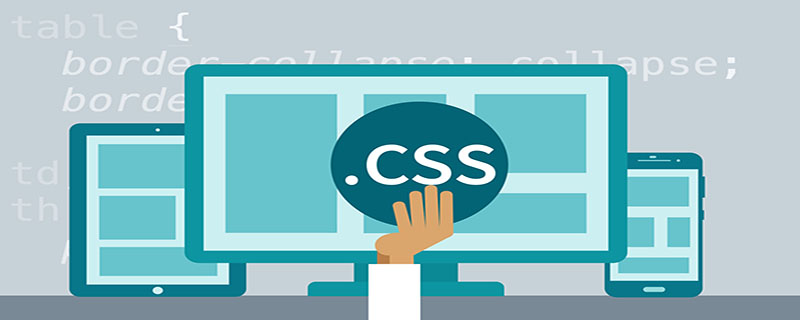
We have learned some layout models before, such as floating, absolute positioning, etc., but these layout methods are not simple enough, but the scope of use is indeed too narrow.
The flex model has many attributes to set various layout methods. Next, we will introduce in detail how various attributes change the layout, and finally make a summary of the attributes.
Look first Let’s take a look at the basic model of flex, as shown in the figure below:
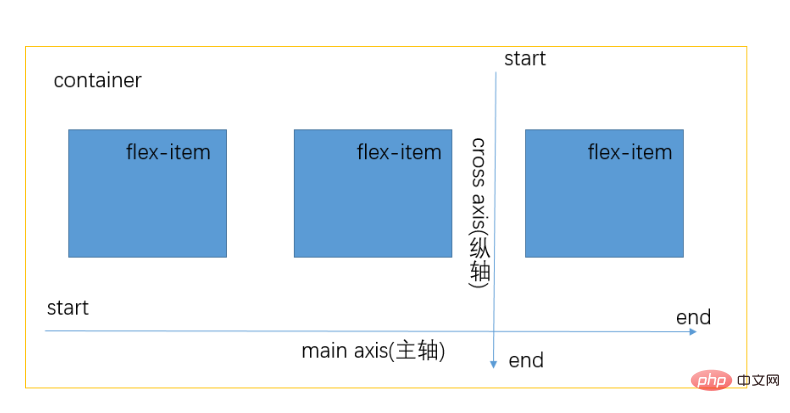
container There are three child elements flex-item in the parent container. When you set display:flex; for the parent container, the direct child elements will have a layout model. In the above figure, the main axis and the vertical axis are respectively one direction of the layout. The following attributes will be discussed in detail.
Next, let’s start with the flex-container properties
1.flex-container
1.1 flex-direction (spindle direction )
flex-direction:row; (The layout is one row, starting from start)
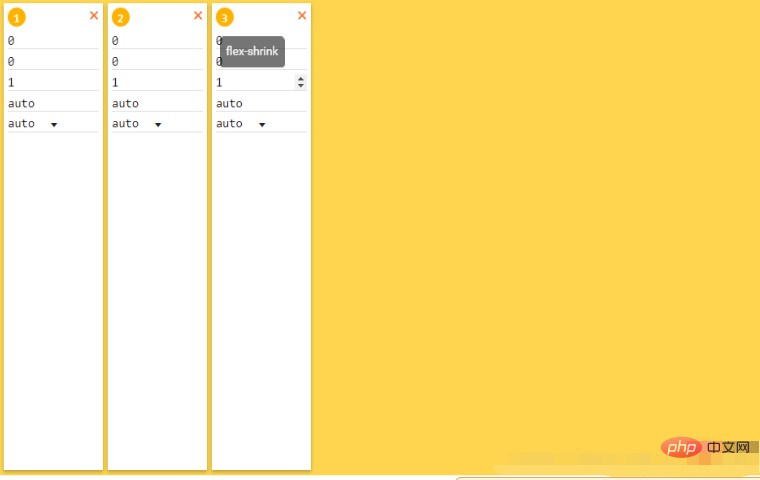
flex-direction:row-reverse; ( The layout is one row, starting from end)
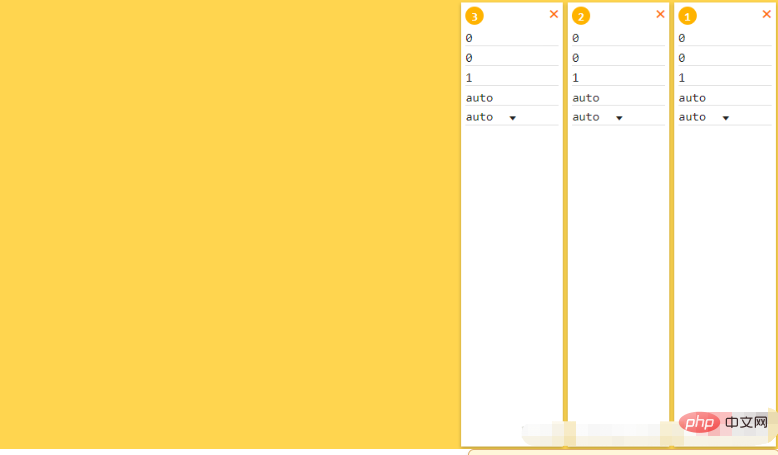
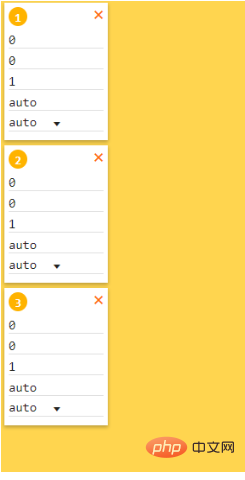
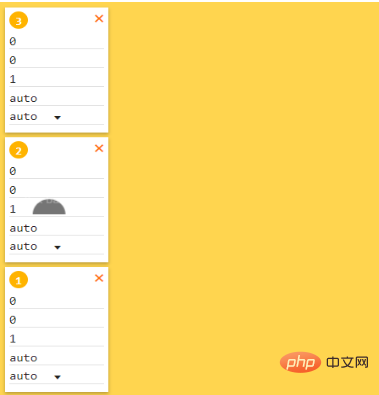
flex-wrap: nowrap; (without wrapping, displayed in one line, even if the width or height of the child element is greater than the width or height of the parent element, it will be displayed in one line)
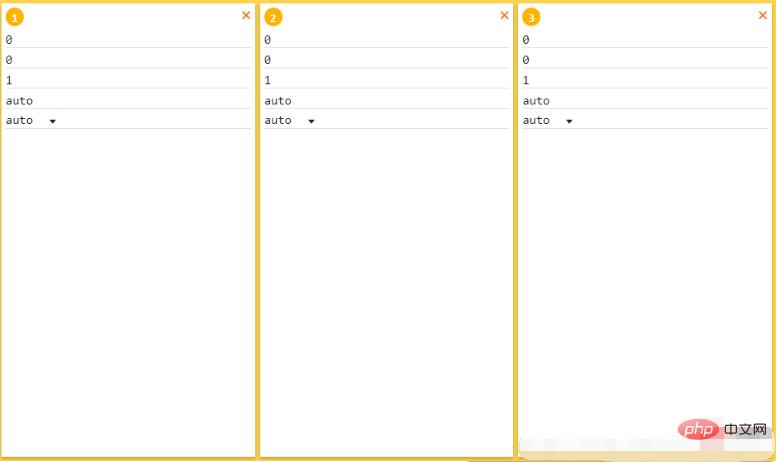 flex-wrap:wrap; (wrap after the content exceeds)
flex-wrap:wrap; (wrap after the content exceeds)
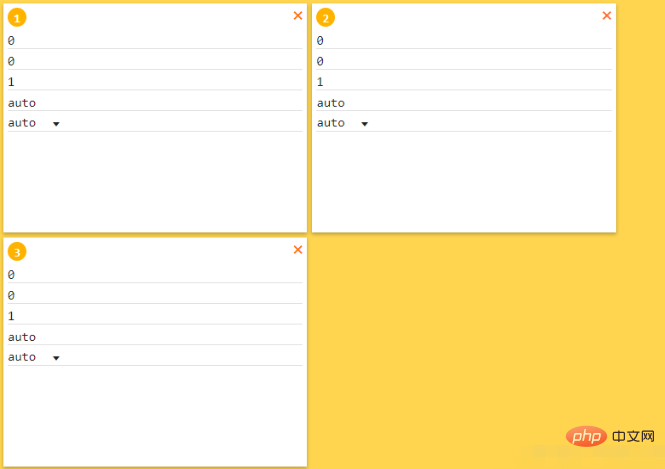 flex-wrap:wrap-reverse; (wrap after the content exceeds Two axes, reverse is to reverse the order of the axis arrangement)
flex-wrap:wrap-reverse; (wrap after the content exceeds Two axes, reverse is to reverse the order of the axis arrangement)
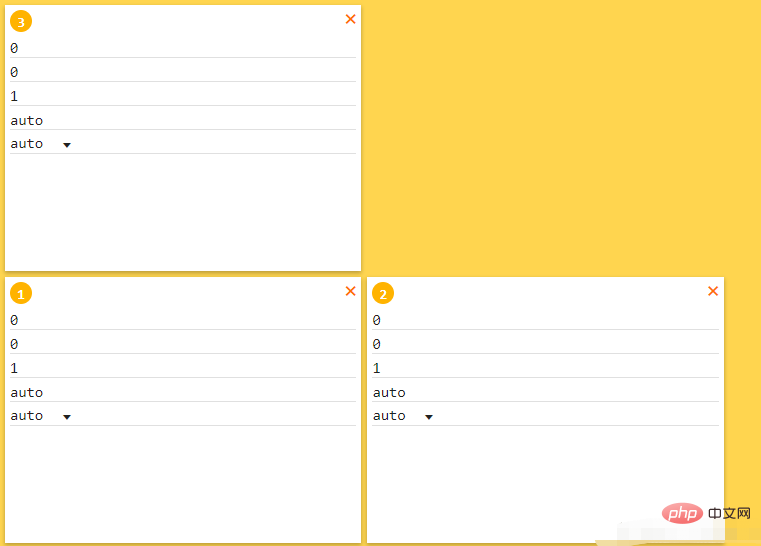
justify-content:flex-start; (start side aligned, left aligned)
##justify-content:flex-end; (end side aligned, right aligned)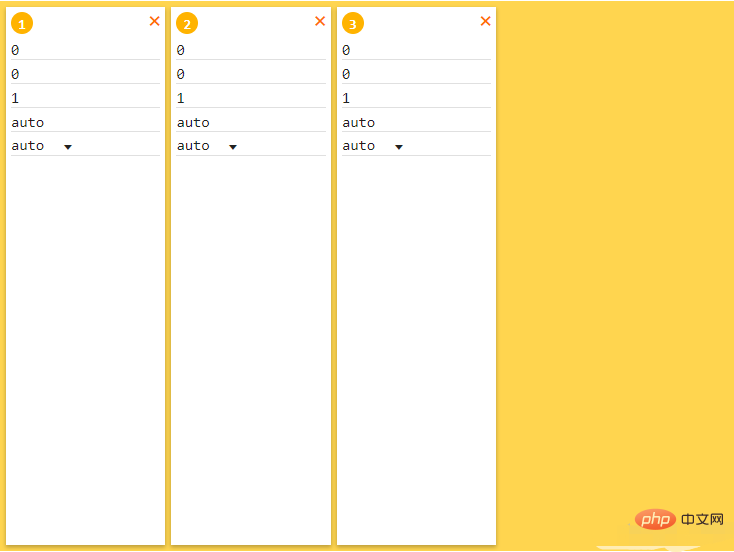
justify-content:center (center alignment) 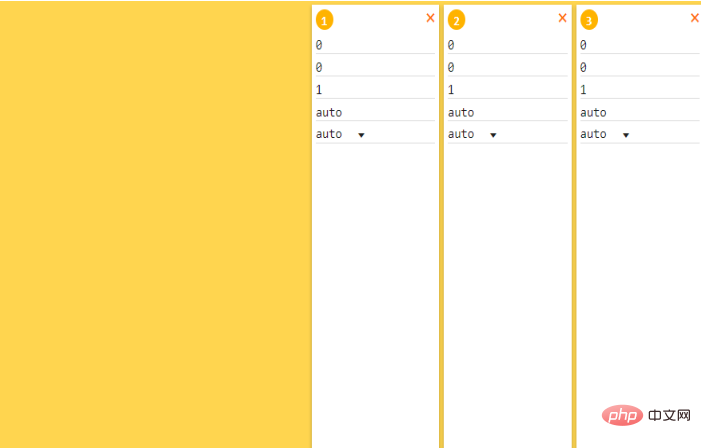
justify-content:space-between; (no spacing on the left and right sides , the middle spacing is the same)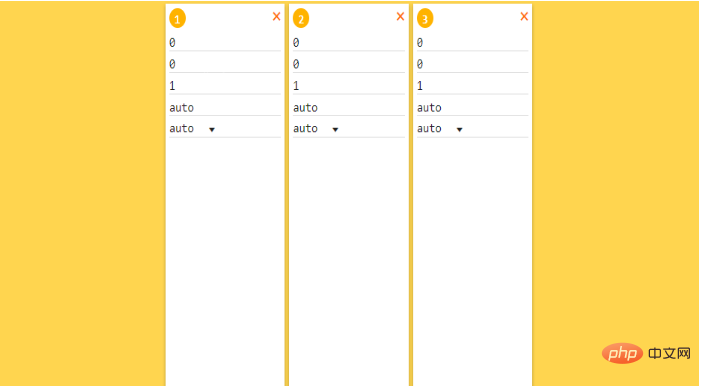
justify-content:space-around; (The spacing on the left and right sides is half of the middle spacing)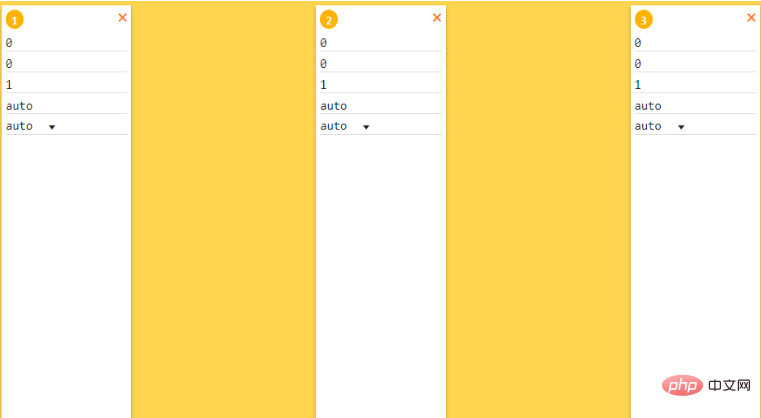
 1.4 align-items (cross-axis alignment)
1.4 align-items (cross-axis alignment)
align-items:stretch; (stretch)
align-items:flex-start; (Start from the start side, align top)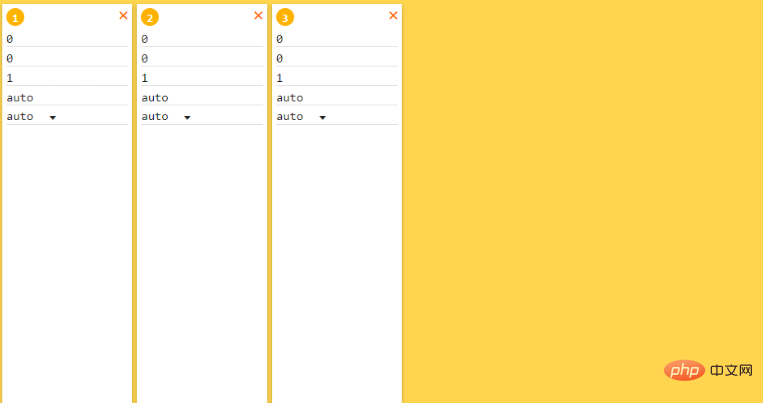
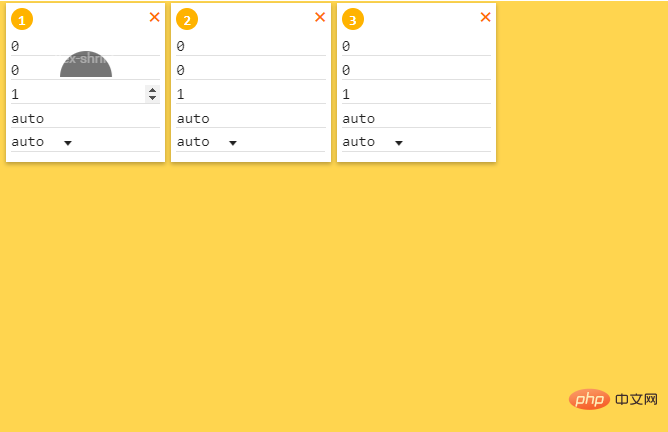
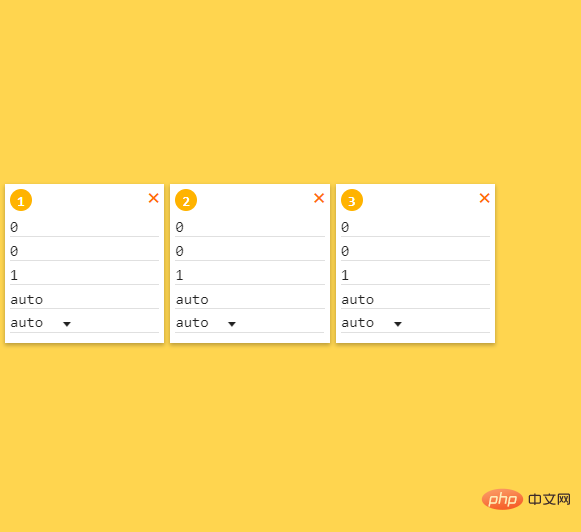
align-items:baseline; (Baseline alignment)
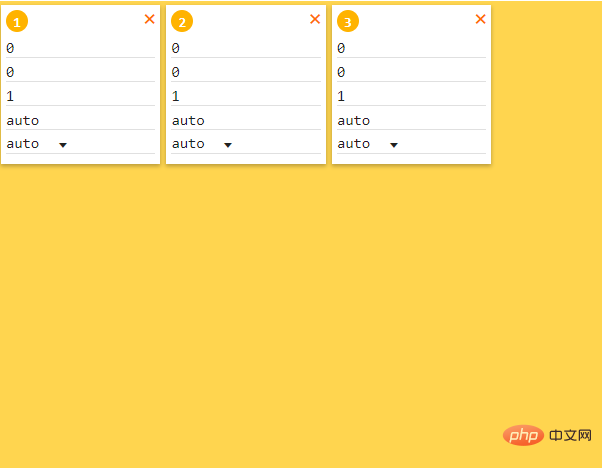
1.5 align-content (Multiple axis alignment )
align-content :stretch; (Stretch)

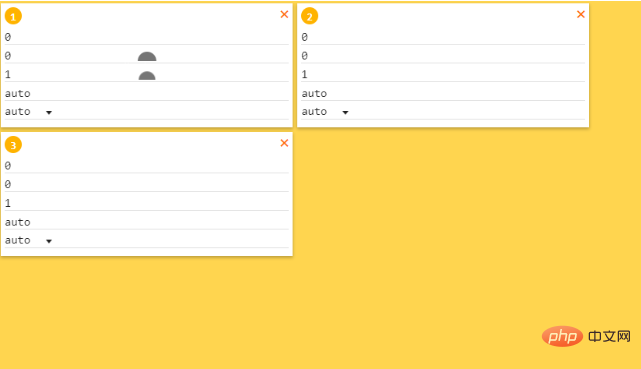
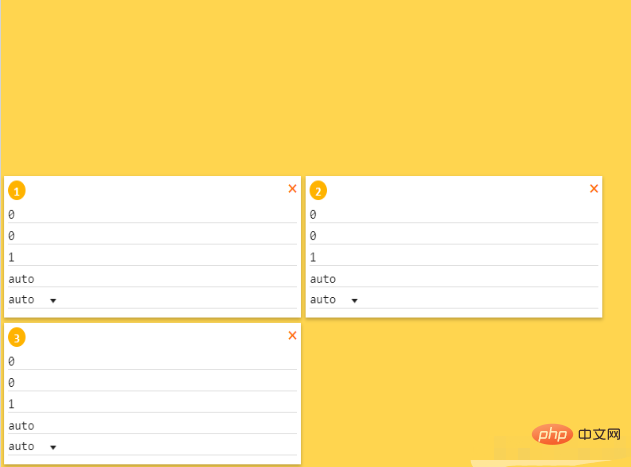 ##align-content :center; (center alignment)
##align-content :center; (center alignment)
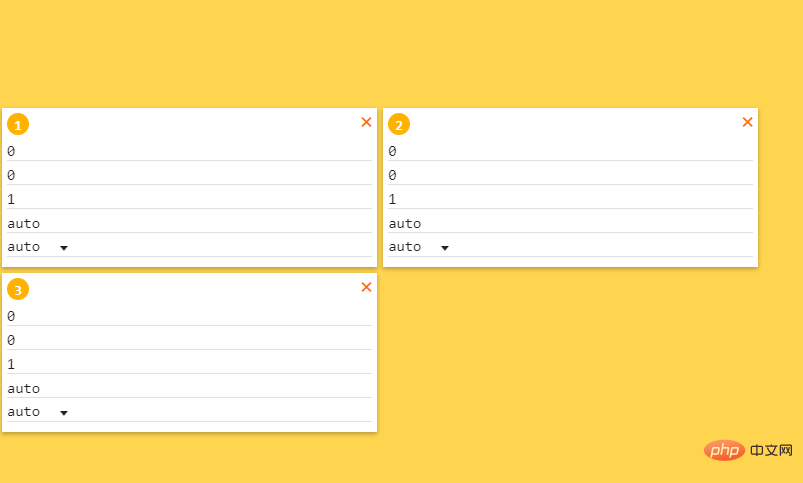 align-content:space-between; (no spacing between top and bottom, the spacing between sub-elements in the middle is the same)
align-content:space-between; (no spacing between top and bottom, the spacing between sub-elements in the middle is the same)
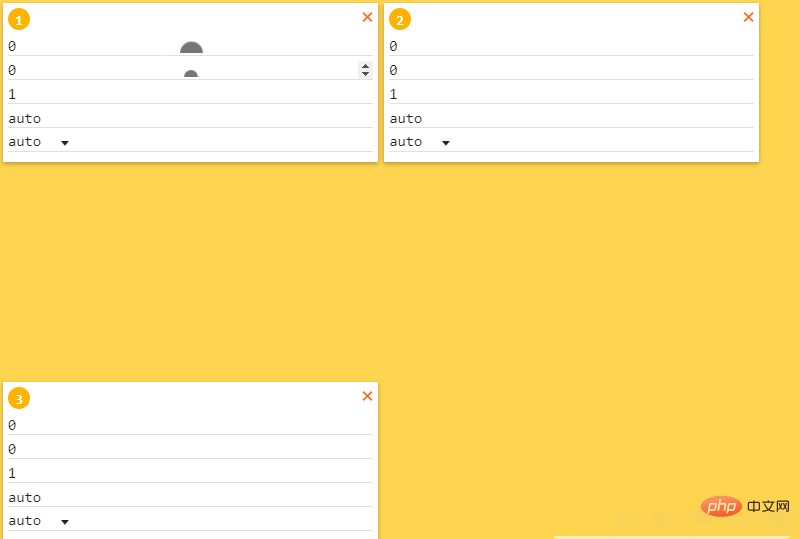 align-content:space-around; (The sum of the upper and lower spacing is equal to the middle spacing)
align-content:space-around; (The sum of the upper and lower spacing is equal to the middle spacing)
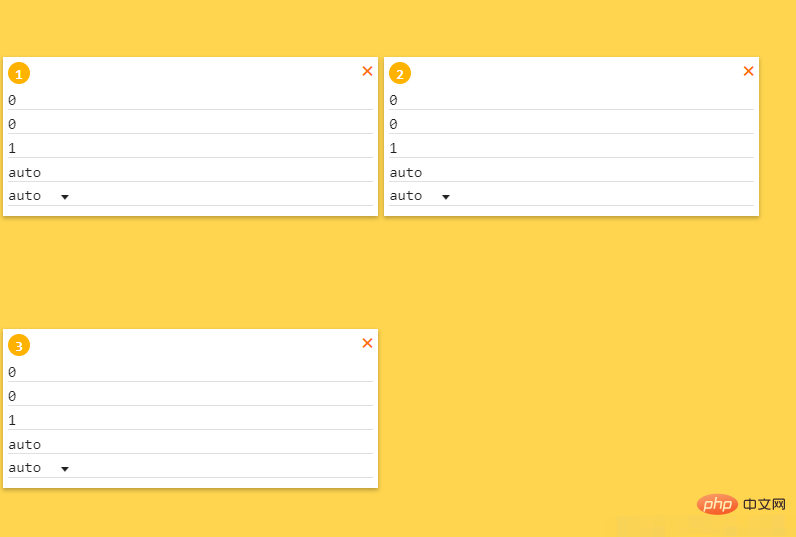
The five attributes in flex-item are order, flex-grow, flex-shrink, flex-basis, flex-self (corresponding to the following 0, 0, 1, auto, auto respectively) The initial order is 123)
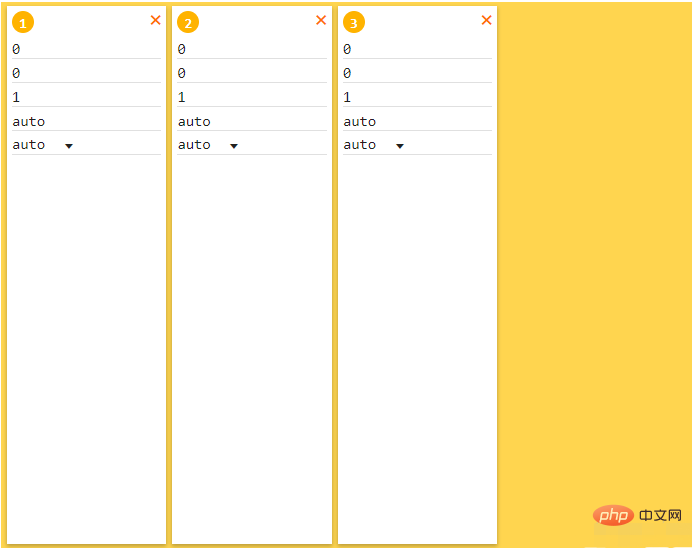 2.1 order(arrangement order)
2.1 order(arrangement order)
##2.2 flex-grow(enlarge Ratio, how to allocate the remaining space, as shown in the figure below, the allocation ratio of the remaining space is 1:2:1) 
2.3 flex-shrink (reduce the ratio, what if the space is exceeded? Compression)
2.4 flex-basis (the main axis space occupied by item, the priority is higher than width)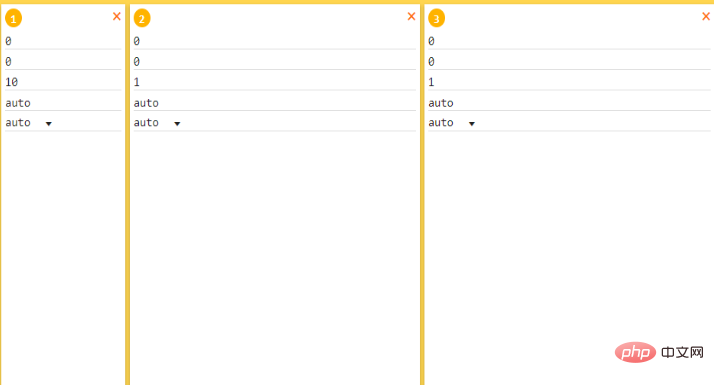
2.5 align-self (alignment, the value is the same as align, covering align-items)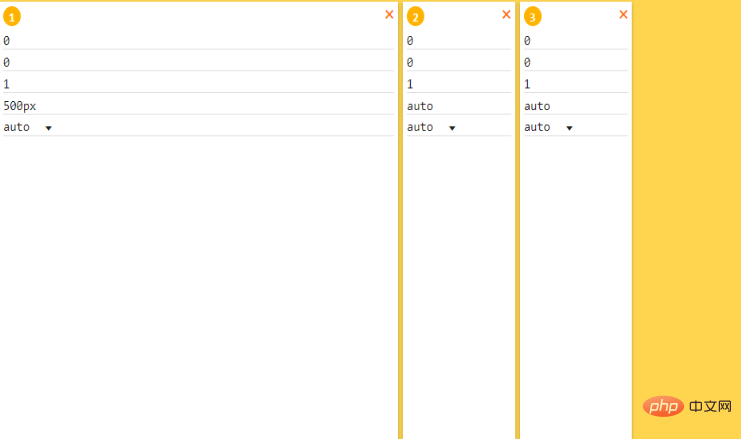
##3. Attribute summary
The properties of flex-container include flex-direction, flex-wrap, justify-content, align-items, align-content
flex-direction(main axis direction): 1) row (the layout is one row, starting from start)
2) row-reverse (the layout is one row, starting from end) 3) column (layout is one column, starting from start Start arranging)
4) column-reverse (the layout is one column, starting from the end)
flex-wrap(How to wrap if one axis cannot fit): 1) NOWARP (No change, display in a line)
2) wrap Turn it upside down) justify-content(Spindle alignment): 1) flex-start (start side aligned, left aligned) 2) flex-end (end side aligned, right aligned) (There is no spacing on the left and right sides, and the spacing in the middle is the same) 5) justify-content:space-around (The spacing between the left and right sides is half of the middle spacing) (cross-axis alignment): 1) align-items:stretch; (stretch) 2) Align-ITEMS: Flex-Start (starting on the start, alignment) 3) Align-Items: Flex-End (END Side Start, lower right) align-content 4) Align-content: center (enlargement ratio, how to allocate the remaining space , as shown in the figure below, the allocation ratio of the remaining space is 1:2:1) flex-shrink (Reduce the ratio, how to compress if the space is exceeded) flex-basis (The main axis space occupied by item has higher priority than width) align-self (Alignment method, covering align-items) As long as you understand the function of each attribute and debug and demonstrate it yourself, there should be no problem with flex layout! ! Combined with these attributes, you can really make a lot of layouts! ! Thank you all for reading, I hope you will benefit a lot This article is reproduced from: https://blog.csdn.net/Allenyhy/article/details/81605547 Recommended tutorial: 《CSSTutorial》
The above is the detailed content of Discuss in detail the flex layout of CSS (picture and text introduction). For more information, please follow other related articles on the PHP Chinese website!

Hot AI Tools

Undresser.AI Undress
AI-powered app for creating realistic nude photos

AI Clothes Remover
Online AI tool for removing clothes from photos.

Undress AI Tool
Undress images for free

Clothoff.io
AI clothes remover

Video Face Swap
Swap faces in any video effortlessly with our completely free AI face swap tool!

Hot Article

Hot Tools

Notepad++7.3.1
Easy-to-use and free code editor

SublimeText3 Chinese version
Chinese version, very easy to use

Zend Studio 13.0.1
Powerful PHP integrated development environment

Dreamweaver CS6
Visual web development tools

SublimeText3 Mac version
God-level code editing software (SublimeText3)

Hot Topics
 1664
1664
 14
14
 1423
1423
 52
52
 1321
1321
 25
25
 1269
1269
 29
29
 1249
1249
 24
24
 How to use bootstrap in vue
Apr 07, 2025 pm 11:33 PM
How to use bootstrap in vue
Apr 07, 2025 pm 11:33 PM
Using Bootstrap in Vue.js is divided into five steps: Install Bootstrap. Import Bootstrap in main.js. Use the Bootstrap component directly in the template. Optional: Custom style. Optional: Use plug-ins.
 Understanding HTML, CSS, and JavaScript: A Beginner's Guide
Apr 12, 2025 am 12:02 AM
Understanding HTML, CSS, and JavaScript: A Beginner's Guide
Apr 12, 2025 am 12:02 AM
WebdevelopmentreliesonHTML,CSS,andJavaScript:1)HTMLstructurescontent,2)CSSstylesit,and3)JavaScriptaddsinteractivity,formingthebasisofmodernwebexperiences.
 The Roles of HTML, CSS, and JavaScript: Core Responsibilities
Apr 08, 2025 pm 07:05 PM
The Roles of HTML, CSS, and JavaScript: Core Responsibilities
Apr 08, 2025 pm 07:05 PM
HTML defines the web structure, CSS is responsible for style and layout, and JavaScript gives dynamic interaction. The three perform their duties in web development and jointly build a colorful website.
 How to write split lines on bootstrap
Apr 07, 2025 pm 03:12 PM
How to write split lines on bootstrap
Apr 07, 2025 pm 03:12 PM
There are two ways to create a Bootstrap split line: using the tag, which creates a horizontal split line. Use the CSS border property to create custom style split lines.
 How to insert pictures on bootstrap
Apr 07, 2025 pm 03:30 PM
How to insert pictures on bootstrap
Apr 07, 2025 pm 03:30 PM
There are several ways to insert images in Bootstrap: insert images directly, using the HTML img tag. With the Bootstrap image component, you can provide responsive images and more styles. Set the image size, use the img-fluid class to make the image adaptable. Set the border, using the img-bordered class. Set the rounded corners and use the img-rounded class. Set the shadow, use the shadow class. Resize and position the image, using CSS style. Using the background image, use the background-image CSS property.
 How to set up the framework for bootstrap
Apr 07, 2025 pm 03:27 PM
How to set up the framework for bootstrap
Apr 07, 2025 pm 03:27 PM
To set up the Bootstrap framework, you need to follow these steps: 1. Reference the Bootstrap file via CDN; 2. Download and host the file on your own server; 3. Include the Bootstrap file in HTML; 4. Compile Sass/Less as needed; 5. Import a custom file (optional). Once setup is complete, you can use Bootstrap's grid systems, components, and styles to create responsive websites and applications.
 How to resize bootstrap
Apr 07, 2025 pm 03:18 PM
How to resize bootstrap
Apr 07, 2025 pm 03:18 PM
To adjust the size of elements in Bootstrap, you can use the dimension class, which includes: adjusting width: .col-, .w-, .mw-adjust height: .h-, .min-h-, .max-h-
 How to use bootstrap button
Apr 07, 2025 pm 03:09 PM
How to use bootstrap button
Apr 07, 2025 pm 03:09 PM
How to use the Bootstrap button? Introduce Bootstrap CSS to create button elements and add Bootstrap button class to add button text



